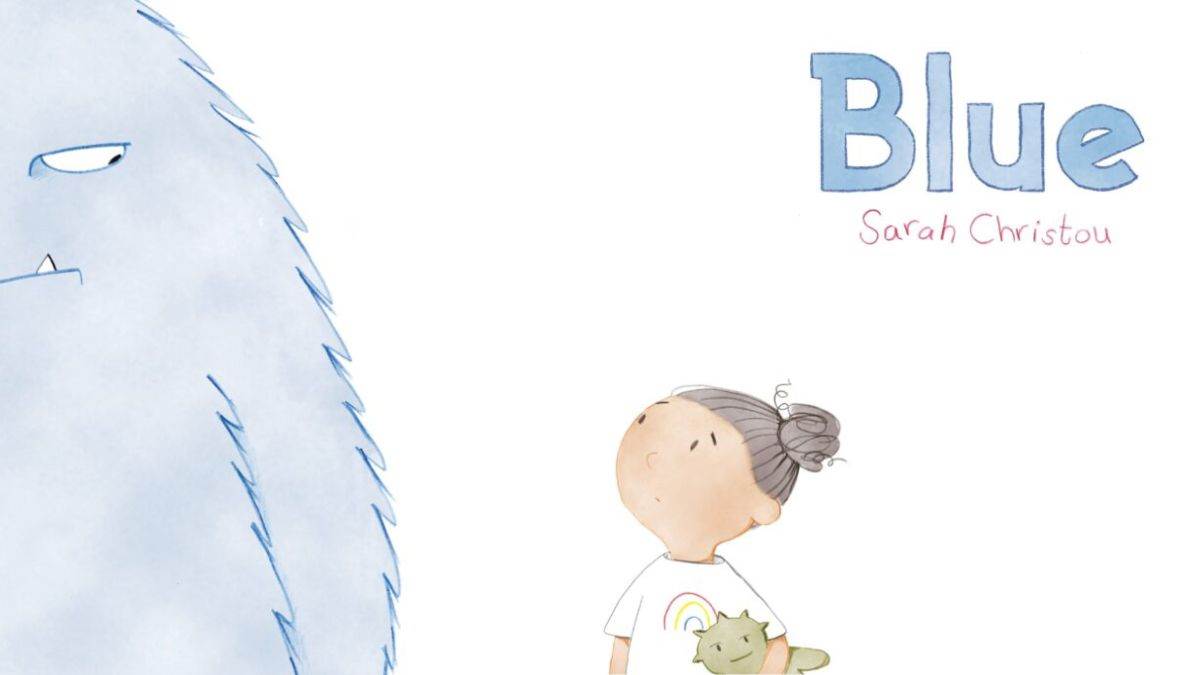Finding yourself in a book: How picture books can reflect diverse experiences
Published on: 11 January 2023
Debut author and illustrator Sarah Christou reveals how diverse books can help children and adults discuss emotions and thus build resilience.

As a child, I wanted to see picture book characters with the same colour skin as me, but I also wanted my experiences represented too. I grew up in a troubled family and I couldn’t find characters in books that felt the things I felt, and that made me feel all the more alone. Granted, Cinderella with her complex family dynamic, reflected something of the kind of family home that can lead to mental health issues in children, but her easy escape from it all hand in hand with Prince Charming didn’t offer a real-world solution.
The lack of diversity in literature
In recent years, publishers have been addressing the issue of a lack of diversity in literature. This is gradually changing the type of characters we see in all books, especially picture books. For example, a 2022 report from the Centre for Literacy in Primary Education (CLPE) states that the number of picture books that feature ‘racially marginalised characters’ has increased from 4% in 2017 to 20% in 2021.
The change in what we’re seeing in picture books goes beyond the colour of characters’ skin – we’re seeing more diverse experiences too. I have books on my shelf with a range of characters: from those who are challenging stereotypes as in Look Up! by Nathan Bryon and Dapo Adeola, to those who are grieving as in My Big, Dumb, Invisible Dragon by Angie Lucas and Birgitta Sif, to those with a disability as in What Happened to You? by James Catchpole and Karen George.
How I came up with the idea for Blue
The idea for my picture book, Blue came to me during a period of stress on my MA in Children’s Book Illustration course two years ago. I imagined the stress was a big blue monster, lumbering around after me, getting in the way, keeping me awake at night and making everything feel harder. In imagining this monster, I turned my stress into something tangible and maybe even a little endearing, and I realised I had the perfect character for a picture book! I created a story for my blue monster that allowed me to share how talking healed me from the effects of childhood trauma: firstly, by talking to my husband and my friends, and then to a therapist.
Although the story is inspired by my own experiences, I wanted Blue to reflect the world of anyone who reads it. A child with a childhood like mine might see the blue monster as something that represents grief or depression. Equally, another child might see the blue monster as something that represents how they felt on their first day at school, or when they last visited the dentist. I haven’t been prescriptive about what the story means – that’s something for you to decide as you read it with your child. My hope is that as you read the book together you will also reflect on your own feelings and what the blue monster means to you, and that will start a discussion between you and your child where you listen but also share something of yourself too.
Show, don't tell
As an author I’ve been on many writers’ courses where I’ve heard the adage ‘show, don’t tell’ many times – I think that can be applied to life too. We can describe emotions to children and teach them how to recognise them and manage them, but the best way for a child (or even an adult!) to learn is to see someone else doing it, especially when that is someone you look up to and trust. Blue is not a story about making sad feelings go away, it’s a story about allowing those sad feelings to turn up and giving them the same care and attention as any other emotion. If we can show children how to be aware of all their emotions, and that difficult emotions are not something to be afraid or ashamed of, then we are equipping them to grow up into adults who are self-aware, empathetic, and resilient in the face of difficulties.
All of this is especially relevant now while we’re still feeling the effects of the COVID-19 pandemic and the TV news is filled with angst and worry as the world buckles under the weight of one crisis after another. Some children are witnessing the adults around them at their lowest ebb. How we talk to children is more important than ever – this is our opportunity to show children how to cope under pressure. I hope Blue will play a role in this.
This is what diversity means to me. It means accepting the complexity of people – that we are not simply black or white, happy or sad, or male or female. Life is multifaceted and as the bookshelves increasingly reflect this, we’ll have more opportunity to sit down, read and talk to children about what the world is really like. I hope you enjoy reading Blue and the conversations it might lead to.

